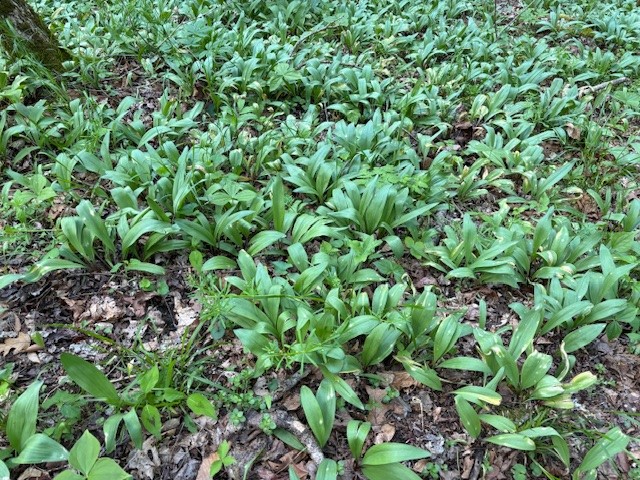This week, the woman behind the popular TikTok account “Appalachian Forager” makes jam from wild pawpaws … and jewelry from coyote teeth.
We also talk with the hosts of a new podcast that looks at coal dust exposure beyond the mines, affecting people far downstream from Appalachia.
And, in some places, slavery continued in different forms well after the end of the Civil War. A new marker in Western North Carolina acknowledges that history and commemorates a disaster that killed 19 Black prisoners.
You’ll hear these stories and more this week, Inside Appalachia.
In This Episode:
- Appalachian Forager Found In TikTok
- Let’s Talking About Taxidermy
- Downstream Dangers Of Coal Dust
- Remembering The Continuation Of Slavery
- The Last Of The Ramps
Appalachian Forager Found In TikTok
Photo Credit: Amanda Page/West Virginia Public Broadcasting
Gathering wild foods has long been a way to put food on the table in the Appalachian mountains. In recent years, the practice has gone digital, with online communities devoted to foraging in the wild, springing up like wild mushrooms after a spring rain.
One woman in eastern Kentucky is sharing what she knows (and some humor) with the TikTok generation through an account called “Appalachian Forager.”
Folkways Reporter Amanda Page has the story.
Let’s Talking About Taxidermy
Photo Credit: Margaret McLeod Leef/West Virginia Public Broadcasting
A lot of folks are fascinated by the results of taxidermy. The preservation and mounting of dead animals has been around since at least the middle ages.
In 2023, Folkways Reporter Margaret McLeod Leef visited a modern practitioner in Yadkin County, North Carolina.
Downstream Dangers Of Coal Dust
Photo Credit: Adrian Wood
Appalachia plays an important part in the world economy. The region produces less coal than it used to — but it’s still a hot commodity for steel makers. That demand creates problems for people living near the terminals where coal is moved from train to ship, to then be carried overseas. Residents of Norfolk and Newport News, Virginia, say airborne coal dust from export terminals is coating their cars and houses — and getting into their lungs.
A new podcast called Crosswinds links that fight on the coast to communities in West Virginia.
Host Mason Adams spoke with spoke with Crosswinds producer Adrian Wood, and Lathaniel Kirts, a pastor and activist in one of the affected communities.
Remembering The Continuation Of Slavery
Photo Credit: Hunter Library Special Collections, Western Carolina University
North Carolina is unveiling a roadside historical marker that officially acknowledges the 1882 Cowee Tunnel disaster. Nineteen prisoners were drowned when their boat capsized in a river west of Asheville.
The marker also acknowledges a form of de facto slavery, used for decades following the Civil War. We heard from Jay Price at WUNC.
The Last Of The Ramps
Photo Credit: Bill Lynch/West Virginia Public Broadcasting
Ramp season is winding down in central Appalachia, but before the last ramp was picked, Producer Bill Lynch followed a friend out for a late harvest at her secret ramp patch.
——
Our theme music is by Matt Jackfert. Other music this week was provided by Tyler Childers, Sierra Ferrell, Bob Thompson, Dinosaur Burps and Tim Bing.
Bill Lynch is our producer. Zander Aloi is our associate producer. Our executive producer is Eric Douglas. Kelley Libby is our editor. Our audio mixer is Patrick Stephens. We had help this week from folkways editor Jennifer Goren.
You can send us an email: InsideAppalachia@wvpublic.org.
You can find us on Instagram, Threads and Twitter @InAppalachia. Or here on Facebook.
Sign-up for the Inside Appalachia Newsletter!
Inside Appalachia is a production of West Virginia Public Broadcasting.
